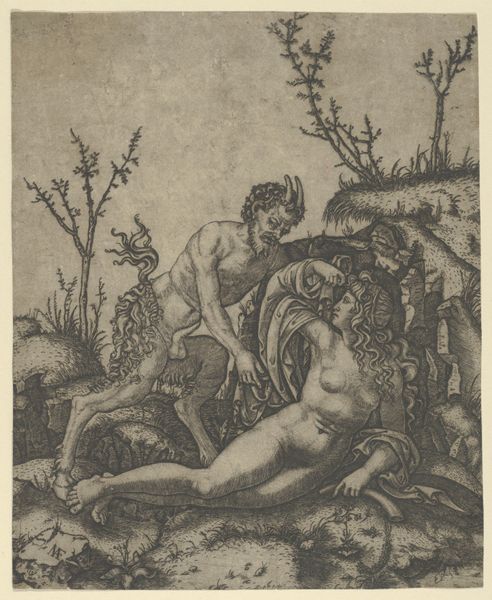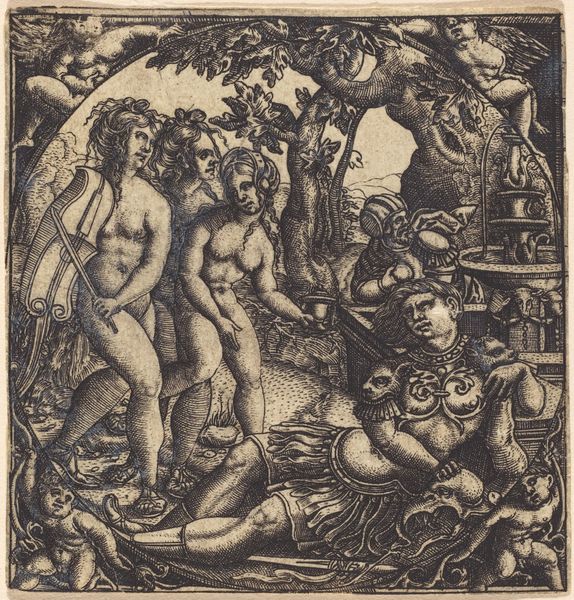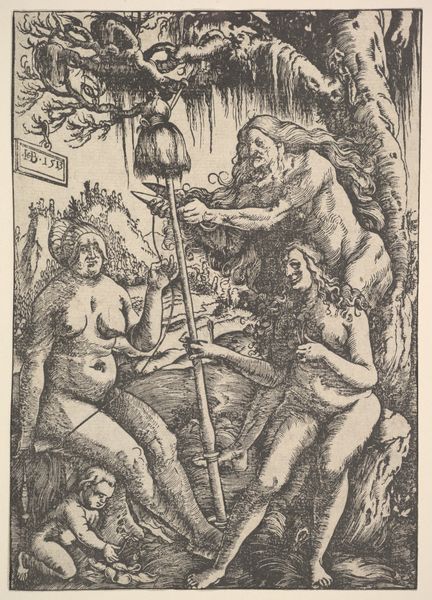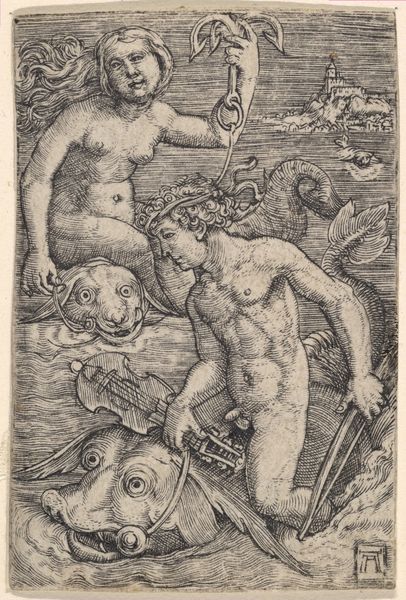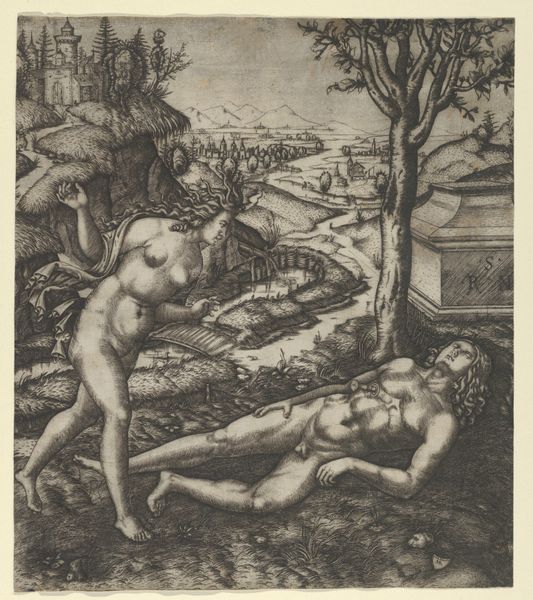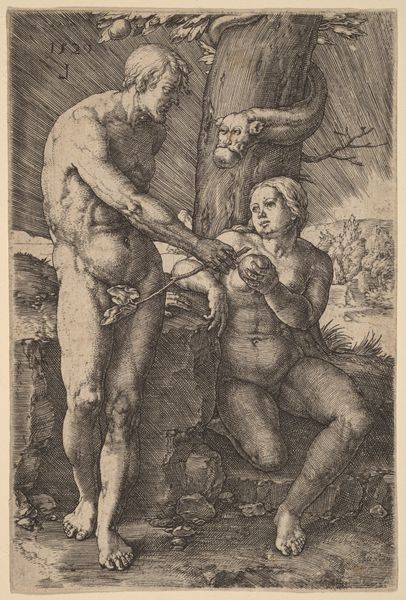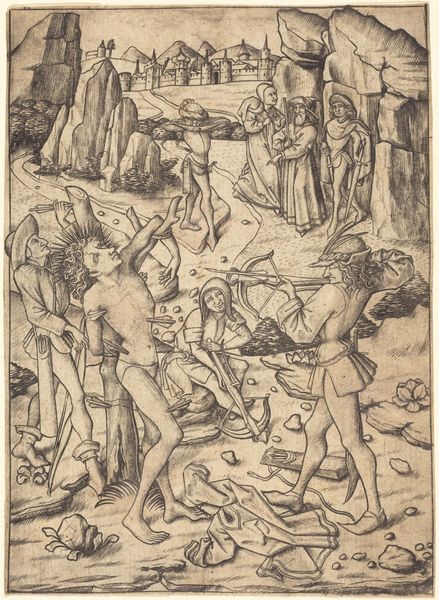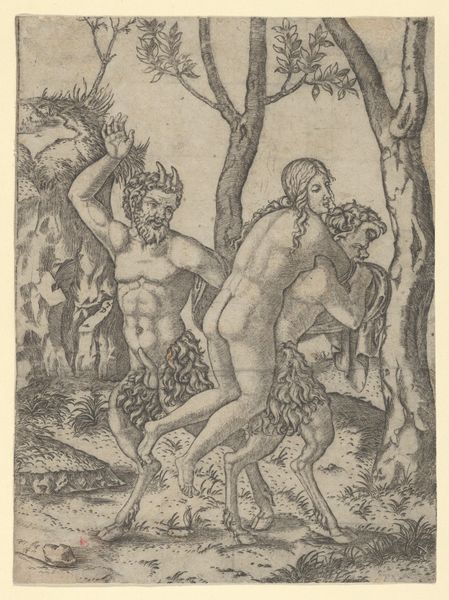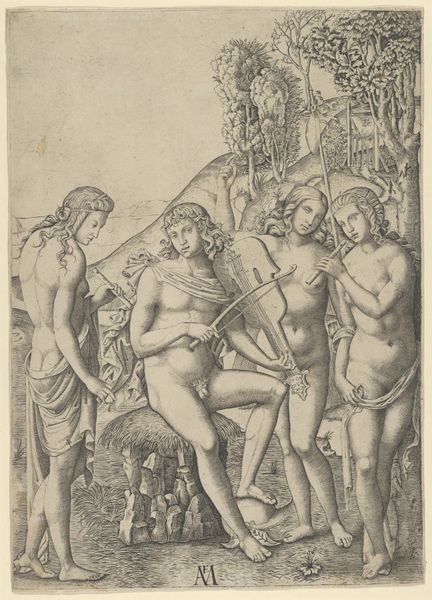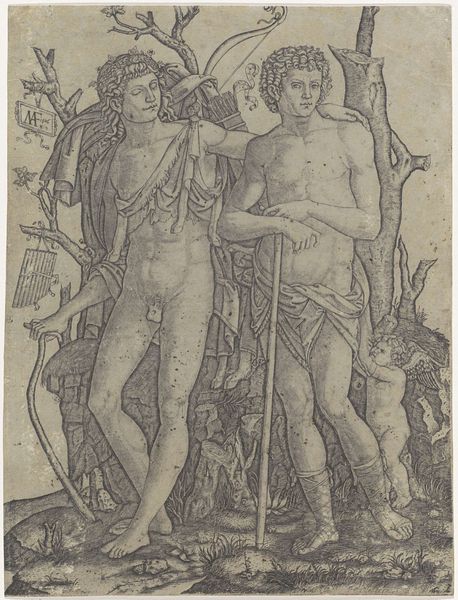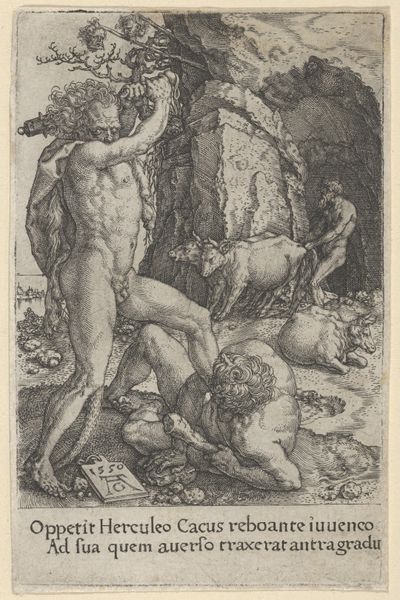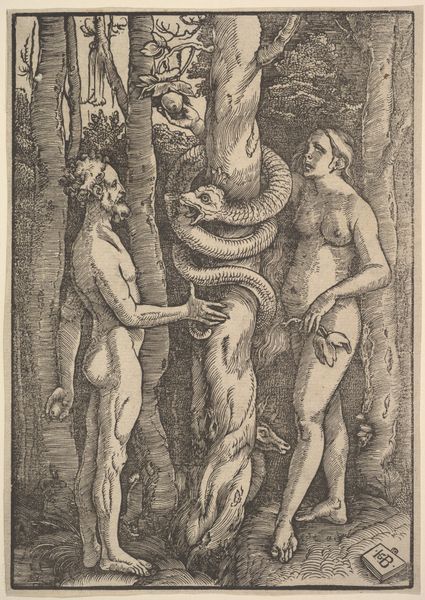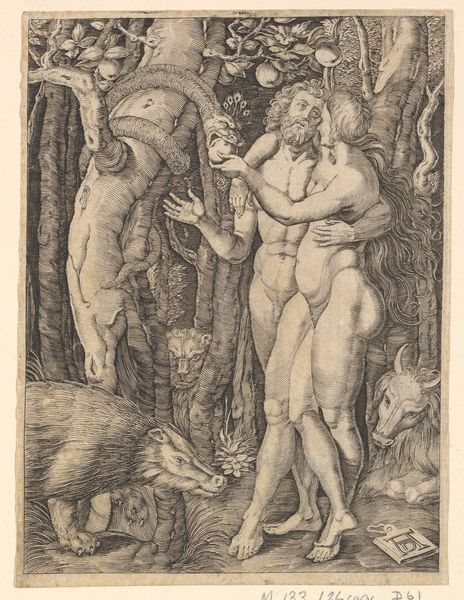
Mars seated at the left, his left hand on Venus's shoulder, cupid beside her at the right 1508
0:00
0:00
drawing, print, intaglio, engraving
#
drawing
#
ink drawing
#
allegory
# print
#
pen sketch
#
intaglio
#
pencil sketch
#
figuration
#
cupid
#
line
#
history-painting
#
italian-renaissance
#
engraving
Dimensions: 11 1/4 x 8 1/8 in. (28.6 x 20.7 cm)
Copyright: Public Domain
Editor: This is "Mars seated at the left, his left hand on Venus's shoulder, cupid beside her at the right," an engraving by Marcantonio Raimondi from 1508. It's an intriguing composition, almost like a stage play with carefully posed figures. What’s your interpretation of this scene? Curator: What I find compelling is how Raimondi appropriates and reframes classical mythology. The work reflects the Renaissance fascination with antiquity, yet it's not a simple revival. It's an active engagement with these inherited narratives. Look at Mars: disarmed, his armor cast aside, seemingly captivated by Venus. It subverts the conventional image of Mars as an aggressive, masculine figure, presenting a more nuanced, perhaps even vulnerable, portrayal of power dynamics in relation to love and beauty. How does this challenge traditional views of masculinity, in your opinion? Editor: I see your point. The traditional view of Mars, the god of war, is completely disrupted here. The weapons on the ground speak volumes. What's with cupid touching Venus' leg, though? Curator: I'd argue that cupid challenges power relations, he is an agent of disruption. Consider that cupid often is seen as a symbol of irrationality and passion, subverting calculated plans of war with unexpected shifts in power and gender roles. How does the placement of the characters, then, influence your analysis? Editor: Well, Venus looks to be ignoring Mars. This isn't necessarily about love between two equals, and she's centered in the picture plane. She seems very deliberate and self-possessed. I hadn’t considered how radical this engraving is in its depiction of women, who often appeared in art from this time as the muse rather than the main event. Curator: Exactly. These nuances highlight that "Mars seated at the left, his left hand on Venus's shoulder, cupid beside her at the right," isn’t a mere illustration, but a re-evaluation. It offers an important discourse on identity and social norms during the Renaissance, urging us to rethink entrenched biases about power and love even today. Editor: This really encourages a fresh reading of well-known mythological tropes and Renaissance norms. Thank you for the context.
Comments
No comments
Be the first to comment and join the conversation on the ultimate creative platform.
